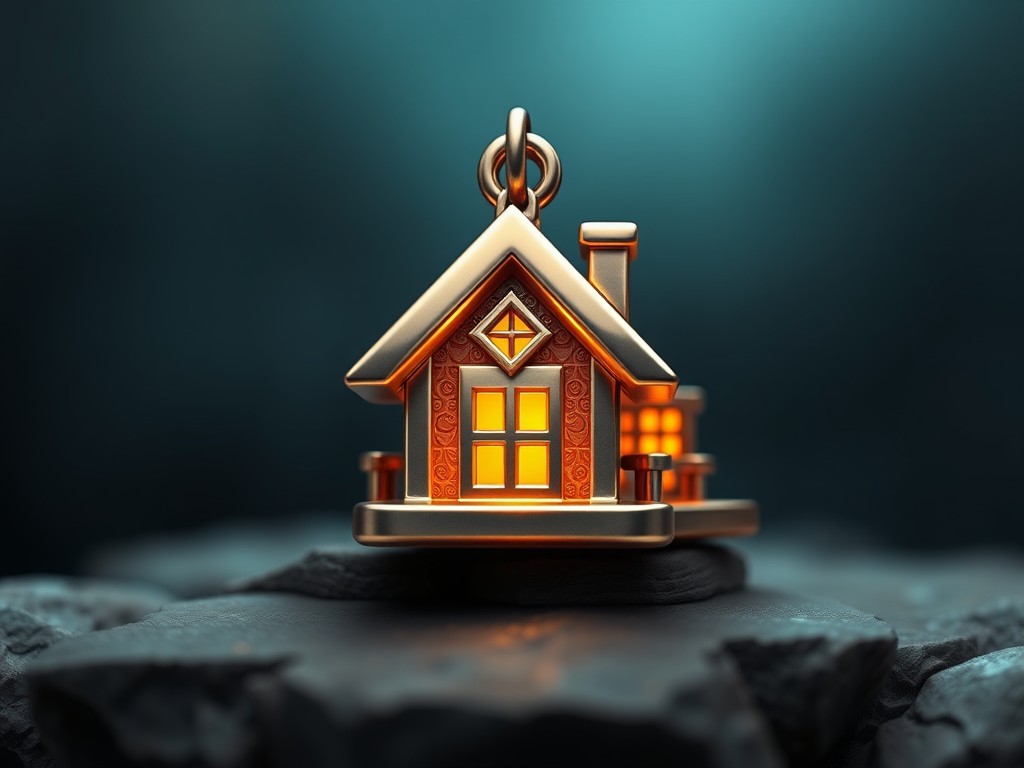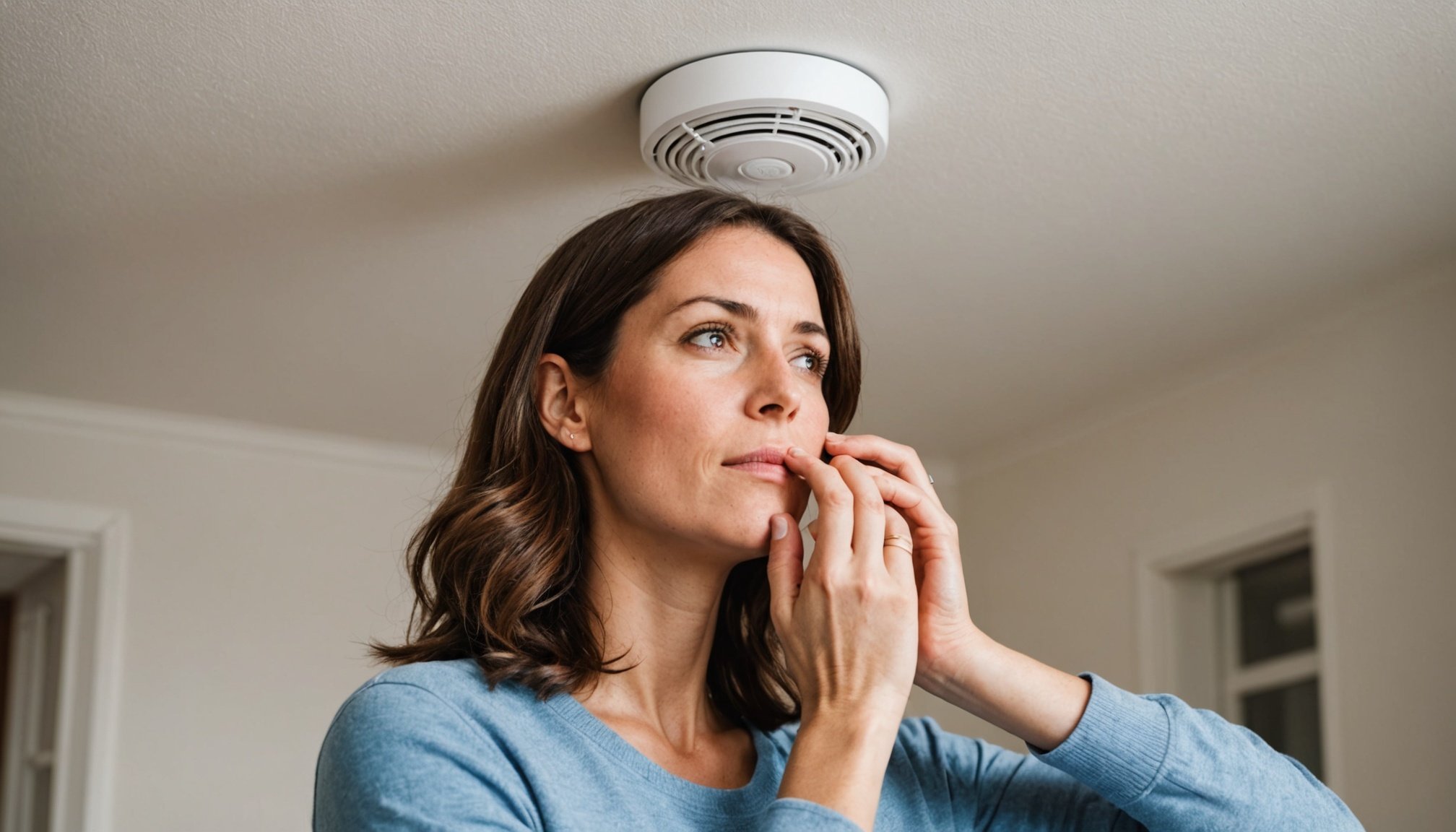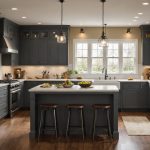Smoke alarms are fundamental to ensuring the safety of occupants in a semi-detached house in the UK. They provide vital early warnings in case of fire, allowing individuals to evacuate promptly and safely. Appropriate placement of smoke detectors can dramatically increase their effectiveness, ensuring a safer environment for all residents. Here, we’ll delve into the factors that determine the ideal placement of smoke alarms in your semi-detached house, focusing on fire safety regulations, heat detection systems, and the role of carbon monoxide detectors.
Understanding the Basics of Smoke Alarm Placement
Getting the basics right is the first step in ensuring the optimal placement of your smoke alarms. Smoke, being lighter than air, will rise and collect at the ceiling. It’s essential to install your detectors where they can quickly respond to increasing smoke levels.
A lire également : Best Eco-Friendly Insulation Solutions for Heritage Homes in the UK
In semi-detached houses, the layout is critical for the placement of alarms. For instance, if a fire breaks out in the kitchen, a smoke alarm in an upstairs bedroom may not detect it immediately. On the other hand, placing an alarm right next to the kitchen might trigger frequent false alarms because of steam and smoke from cooking. Therefore, an understanding of building layout is crucial for strategic placement.
Regulations dictate that a detector should be installed on each level of your home, including lofts and basements. Furthermore, smoke alarms should be fitted in every room where a fire could start. These rooms include any with a heater, those used for living or dining, and any room where electrical appliances are used.
A découvrir également : Top Eco-Friendly Building Materials for Sustainable Small Home Extensions in the UK
Interlinked Smoke Alarm Systems
Interlinked smoke alarm systems provide an extra layer of safety for your home. When one alarm detects a fire, all the alarms in the system will sound. This system ensures that if a fire breaks out in an isolated part of the house, the alarms nearest to the inhabitants will still alert them, increasing the chances of a faster and safer evacuation.
For the best protection, your smoke alarms, whether battery-operated or mains-powered, should be interlinked. In the case of a semi-detached house, this can be particularly useful for larger properties or those with multiple floors. When installing your interlinked system, ensure that the alarms are evenly distributed around the house, with at least one alarm per floor.
Heat Detection and Smoke Alarms
Heat detectors and smoke alarms work hand in hand for optimal fire safety. While smoke alarms are quicker to respond to fires with a lot of smoke, heat detectors are better suited for areas prone to high temperatures, such as kitchens or lofts.
Heat detectors operate by sensing a rapid rise in temperature or when the room’s temperature reaches a pre-set level. They are less likely to sound false alarms from cooking smoke, making them ideal for installation in the kitchen.
In semi-detached houses, a combination of heat detectors and smoke alarms will provide a comprehensive fire safety system. Ensure that the heat detectors are placed in risk-prone areas like the kitchen, while the smoke alarms should cover the rest of the house.
The Importance of Carbon Monoxide Detectors
Aside from smoke alarms and heat detectors, carbon monoxide detectors are another essential safety feature for your home. Carbon monoxide is a deadly gas that is both odorless and colorless, making it nearly impossible to detect without a detector.
Carbon monoxide detectors should be installed in or near every bedroom and living area in your home, as well as any room that contains a fuel-burning appliance. In a semi-detached house, detectors should be located on each floor for maximum safety.
Adhering to Fire Safety Regulations
In the UK, fire safety regulations are strict, particularly concerning smoke alarms. They state that all new dwellings must have a mains-operated, interlinked smoke alarm system installed. Furthermore, smoke alarms must be placed in circulation spaces such as hallways and landings, and heat alarms should be installed in kitchens.
Additionally, carbon monoxide alarms are required in rooms with a solid fuel-burning appliance. These regulations ensure a basic level of fire safety, but it’s recommended to go above and beyond these requirements for maximum protection.
In conclusion, the placement of smoke detectors in a semi-detached house depends on several factors including the layout of the house, the presence of interlinked systems, and local safety regulations. By understanding these factors, you can ensure that your home is as safe as possible from the threat of fire.
Proper Maintenance and Regular Testing of Smoke Alarms
Once smoke alarms and other safety systems are installed, their maintenance and regular testing are equally important. Like any other electronic device, smoke alarms can malfunction or their batteries can be depleted. Ensuring these alarms are in working order is a vital part of maintaining a safe environment in your semi-detached home.
Regularly testing your alarms is crucial and should be done at least once a month according to the National Fire Protection Association. This can be done by pressing the test button on the unit. If the alarm does not sound, it may need a new battery or replacement. Keep in mind that even mains powered smoke alarms have backup batteries that need to be checked and replaced regularly.
Always keep your smoke alarms clean and free from dust. A choked or blocked smoke alarm will have a delayed response, which can be disastrous in the event of a fire. Vacuuming around the unit with a brush attachment can help prevent blockage.
Remember, smoke alarms have a lifespan of about ten years. After this period, their efficiency decreases and they should be replaced. If you are unsure of your smoke alarm’s age, it’s safer to replace it.
Understanding the role of Fire Doors in a Semi-Detached House
Fire doors play a significant role in fire safety, especially in a semi-detached house. This type of door is designed to prevent the spread of fire and smoke between different compartments of a building or into escape routes. They are an essential part of a property’s passive fire protection system.
In a semi-detached house, fire doors are particularly important in creating a safe exit route in case of a fire. Building regulations in the UK stipulate that all doors leading to an escape route must be fire doors.
Fire doors are typically fitted with an intumescent seal around the edges that expands in the event of a fire, sealing off the gap between the door and door frame, thereby preventing the spread of fire and smoke. They must always be kept closed or fitted with a device that ensures they close automatically after being opened.
It’s important to remember that fire doors should never be propped open. While it might be convenient, leaving these doors open compromises their effectiveness in preventing fire spread, putting lives and property at risk.
Conclusion
Ensuring the safety of your semi-detached home in the UK requires careful consideration of multiple factors including the placement and maintenance of smoke alarms, understanding the role of fire doors, and adherence to fire safety regulations. It also involves having a combination of smoke heat and carbon monoxide detectors, as well as an interlinked alarm system.
The installation and maintenance of smoke alarms is an essential aspect of fire safety, and understanding the basics of smoke alarm placement can dramatically increase their effectiveness. Equally important is adhering to fire safety regulations, which not only provide guidelines for smoke alarm placement but also lay out the requirements for fire doors and other safety features like heat alarm and carbon monoxide detectors.
In conclusion, fire safety measures go beyond the installation of smoke detectors. It requires proactive actions such as regular testing and maintenance, proper usage of fire doors, and a thorough understanding of the building control regulations. By implementing these measures, you are not only protecting your property but also ensuring the safety and well-being of everyone living in your semi-detached house.






